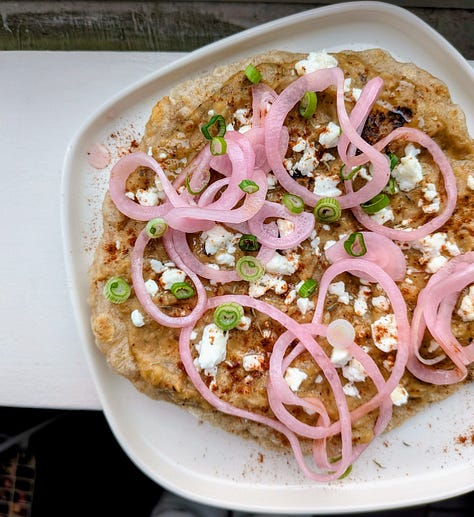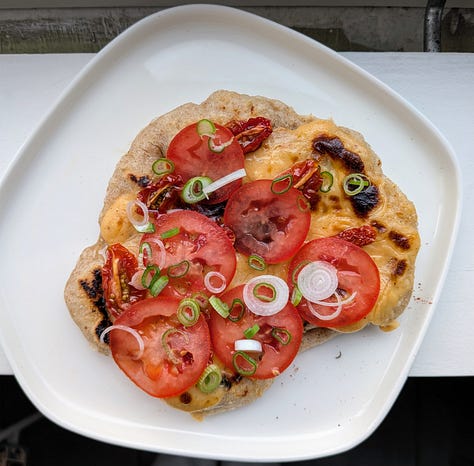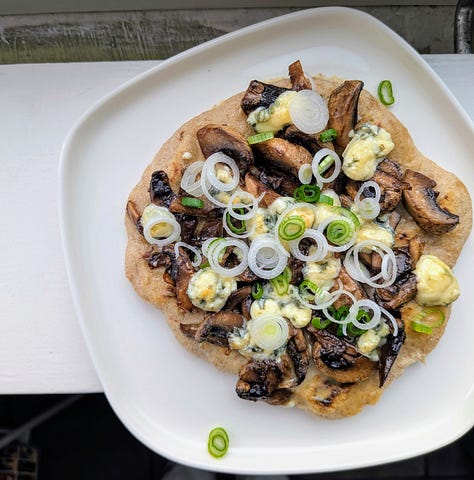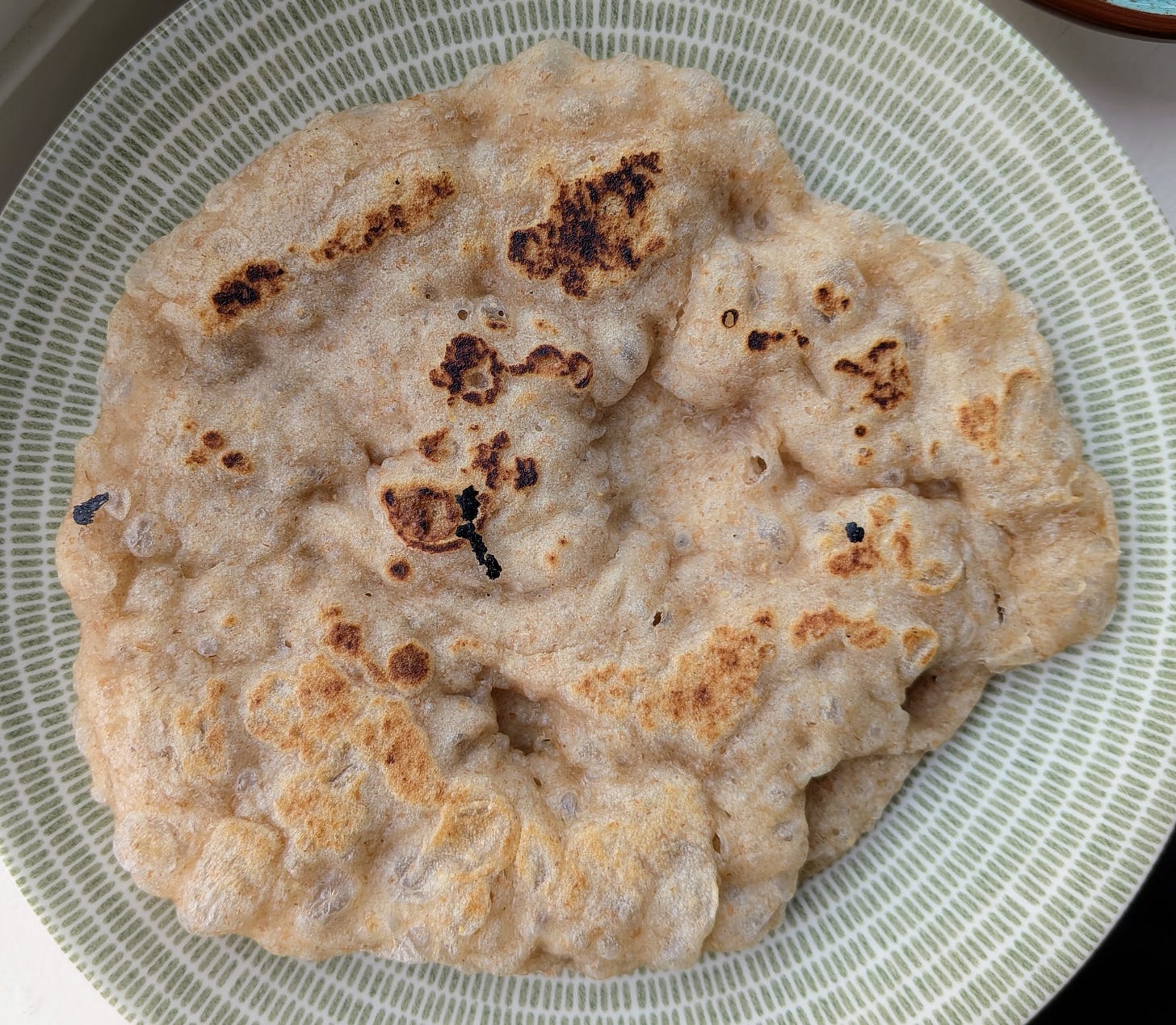Things To Do With Vegetables When You're...
The first instalment in my celebration of meat-free cooking
OK, before we start, it’s your faithful line cook’s birthday today. 39 and feeling every week of it. To mark it, I’m running a 25% off paid subscriptions this week only. I rely on paid subscribers to make this newsletter possible. Please upgrade if you can.
Now let’s get to business…



If I had to choose between meat and bread, there’d be no hesitation as to which I’d give up.
Bread just means so much to me. Maybe even more than potatoes do and, my God, do I have a weird love of potatoes. The comforting blank-canvas-simplicity of a crisp baguette. The slightly pretentious complexity of a sourdough baked so hard it hurts to bite into. Even a slice of pale-as-porcelain, mega-processed sliced white slathered in butter and marmite. It’s all beautiful to me.
A breadless existence would probably take away 16% of the joy in my life.
(That might not sound like much but the rest of my living joy comes courtesy of my wife and kids so if I put the bread percentage higher it would start turning into a slight on those guys.)
Bread is important for this edition of the newsletter because, in its flattened guise, it will be the canvas on which we showcase some ridiculously delicious vegetables. I plan to do a little more with this newsletter to celebrate the endless joys of vegetables. I’m calling this series “Things to do with vegetables when you’re…” and I’m planning on ending that sentence differently each edition with different situations/seasons/moods.
For now, I thought I’d start with the best plant-based recipe of them all: bread.
What I’m sharing below is a recipe for absolutely stunning flatbreads. The idea comes from Finnish potato bread, but I’ve mixed that with my go-to poolish bread recipe and my general love of smoky flavours. What you get is something great mopping up hummus and curries, but also as a pizza base and wrap. It takes a couple days to make but the long ferment gives you excellent, almost sourdough flavour.
And since this newsletter series is a celebration of vegetables, I’m also sharing a few ways below to turn these into really lovely vegetable-topped flatbreads that stand on their own as a main dish.
A Recipe for Finnish-inspired Potato Flatbread
This recipes makes use of a poolish to create a very slow-fermented dough with a subtle sourdough flavour.


